QLD tour of NSW and SA pasture research programs
The Queensland Pasture Resilience Program team recently visited our counterparts in New South Wales (NSW) and South Australia (SA) to explore pasture research projects tackling key challenges like pasture dieback, soil acidity, rhizobia, breeding better legume varieties, and methane emissions. The trip was a valuable opportunity to share ideas and learn from their experience with temperate and tropical species.
In NSW, we were hosted by the NSW Department of Primary Industries and Regional Development (NSW DPIRD) and NSW Local Land Services (NSW LLS) for three days. We visited trial sites and producer-led projects focused on pasture dieback tolerance, phosphorus and lime treatments, methane-reducing pasture mixes, and long-term grazing management.
Day 1 – Northern Rivers Region, NSW
In the Northern Rivers region, we viewed trials led by Professor Terry Rose (Southern Cross University) and Nathan Jennings (NSW LLS) which are investigating the tolerance of temperate and tropical grass species to pasture dieback. The species were sown in small plots and harvested at different heights to simulate grazing pressure. The species tolerance seen in this trial closely aligns with Queensland’s findings.

We then visited a large paddock demonstration where pasture dieback was managed by over-sowing more tolerant grass species, temperate grasses and legumes. Broadly the findings so far demonstrate the importance of pasture establishment techniques and how it differs between temperate and tropical species. The district has a very high annual rainfall but storing moisture and planting seeds at the right depth are still very important to successful establishment.
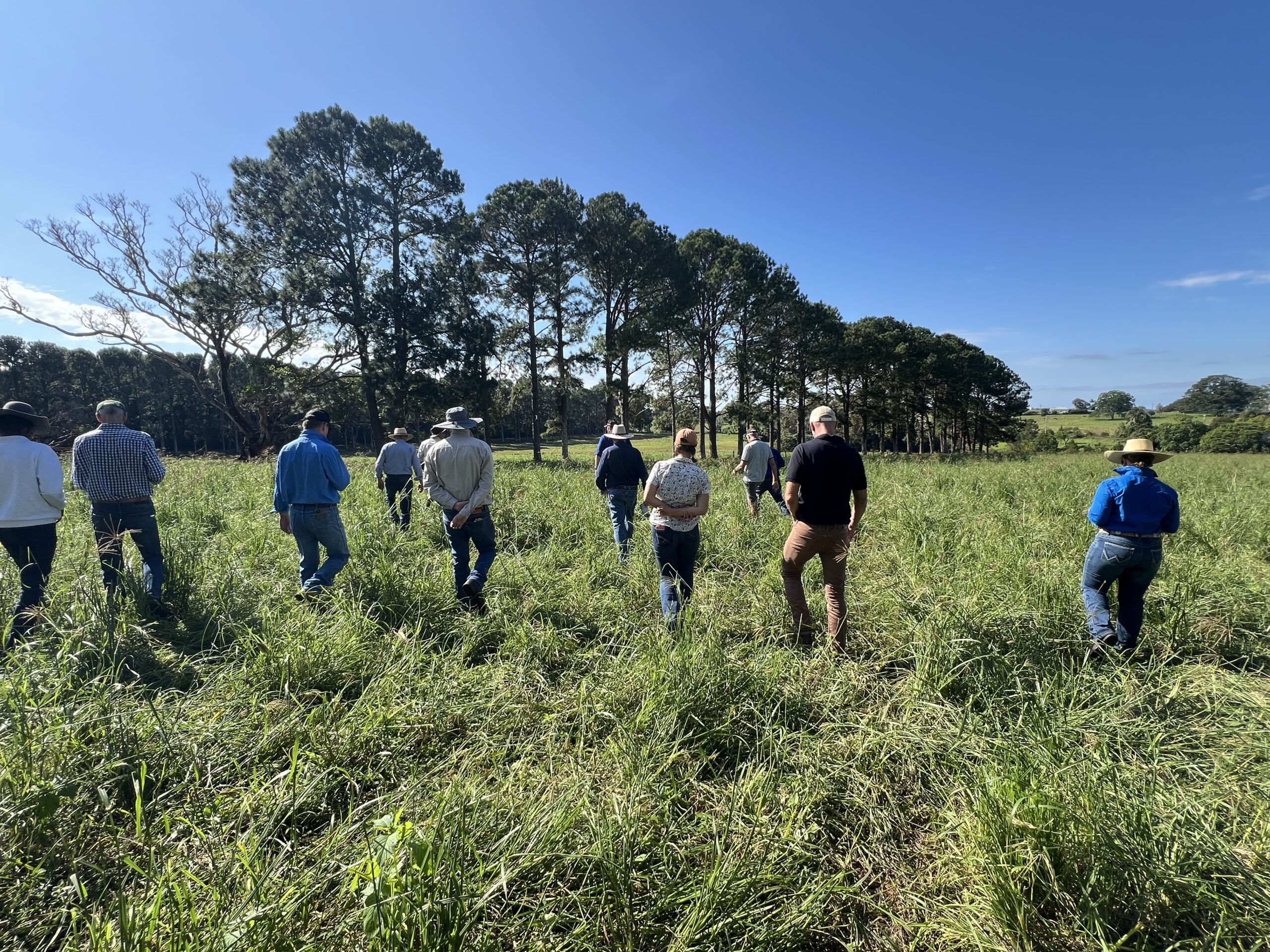
After lunch, we visited a property owned by Tom Amey who very successfully manages improved C4 grasses and legumes. Tom stressed the importance of strategic grazing management despite experiencing ongoing dieback challenges since 2023. Over the years he has experimented with a variety of tropical legumes and grasses, fertiliser application and grazing intensity and has had excellent results. Tom has hosted a producer demonstration site and is an industry leader when it comes to pasture management and development in northern NSW. Read more about Tom’s production system here.
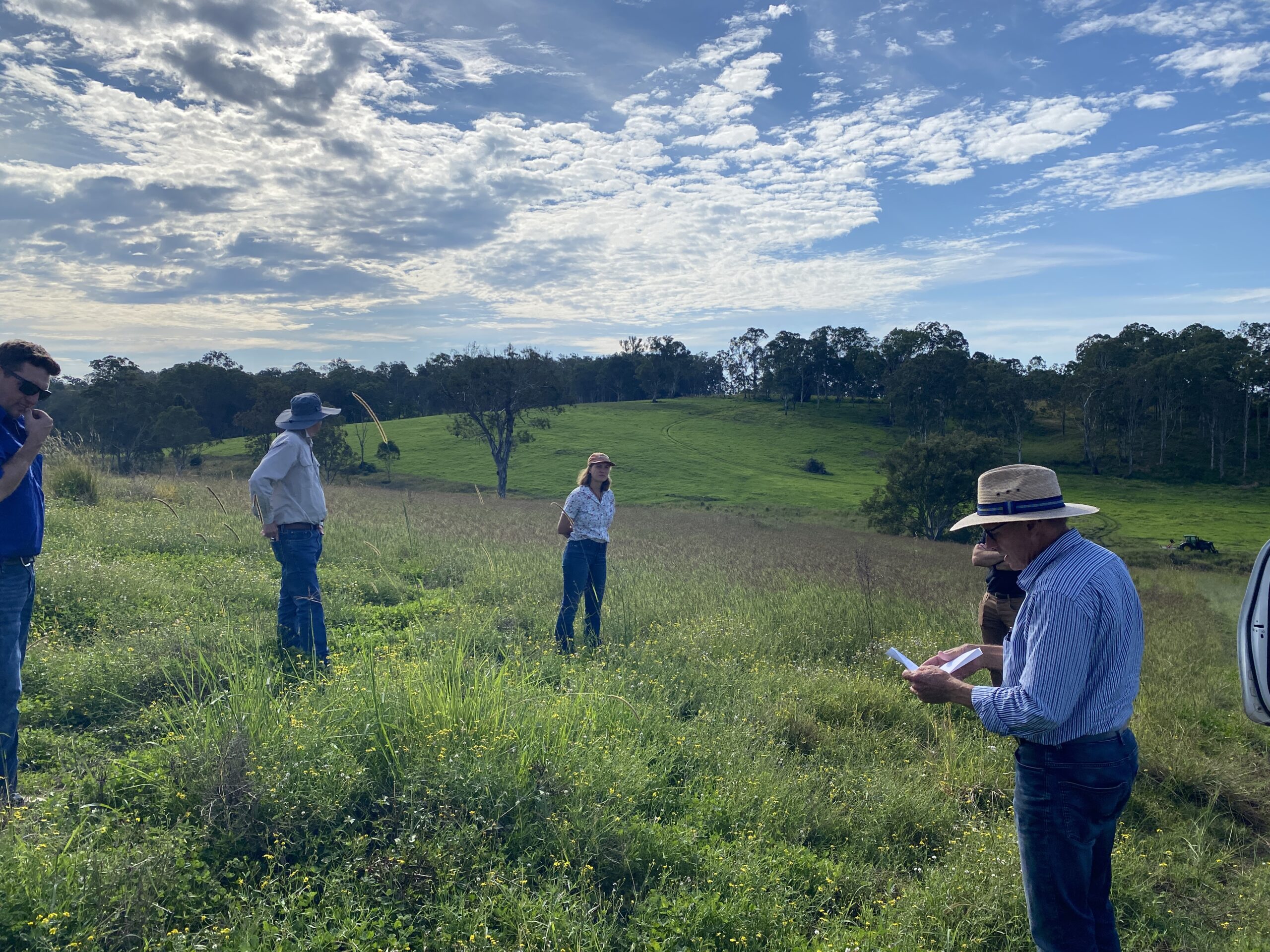
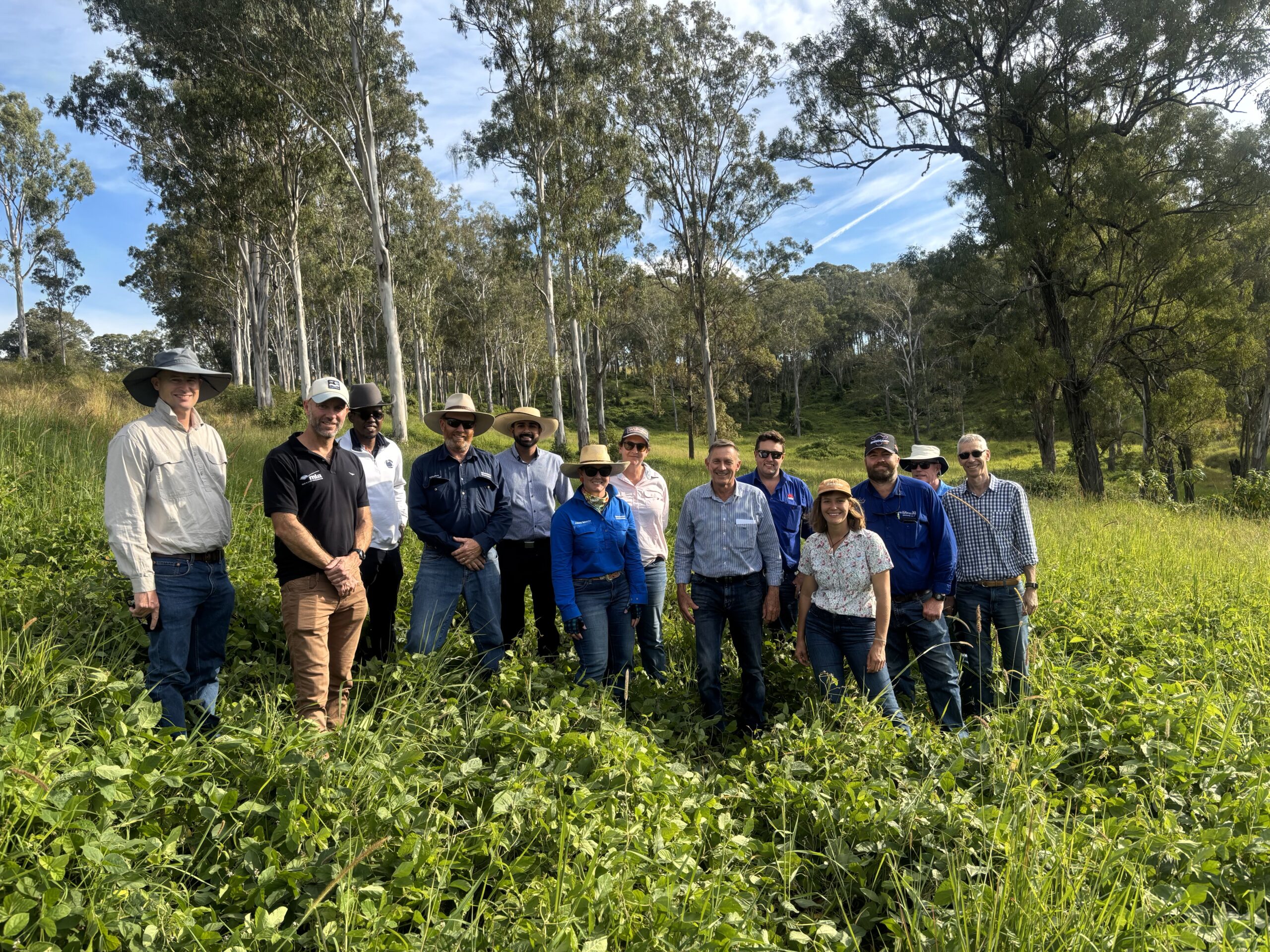
Day 2 – Kingstown and Tamworth, NSW
Day two had a chilly and wet start, with a drive from Glen Innes down to Uralla to meet the NSW DPIRD team. At Kingstown in the Northern Tablelands region, Carol Harris, Sarah Baker and Mark Brennan showed us a field trial on an acid and low-phosphorus soil that demonstrated large responses following lime and fertiliser applications. The results from the trial are important to the livestock industries in that district, showing huge potential for increased pasture production and carrying capacity.
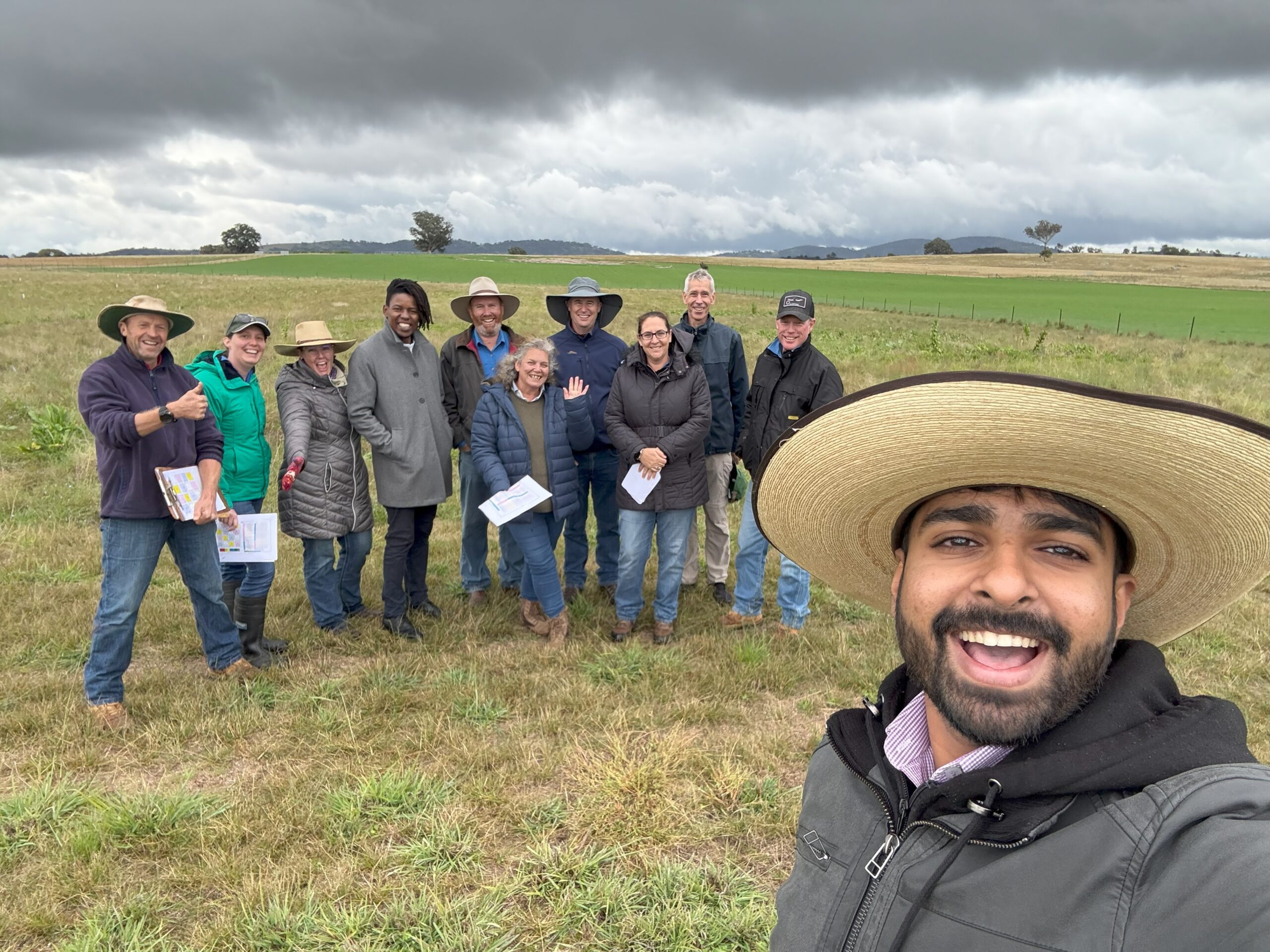
At Tamworth Research Station, we were shown an innovative low-methane pasture mix experiment and tropical grass trials assessing persistence and dieback resistance by Suzanne Boschma and Sean Murphy. For those of us from central Queensland, it was so strange seeing a mix of tropical and temperate legumes and grasses growing happily together! We were told that Tamworth is a unique environment where the temperature and rainfall provide opportunities for graziers to utilise temperate and tropical species together. We also had the opportunity to see Alfalfa Mosaic Virus and how it has affected Desmanthus, which is not something we have observed in Queensland.
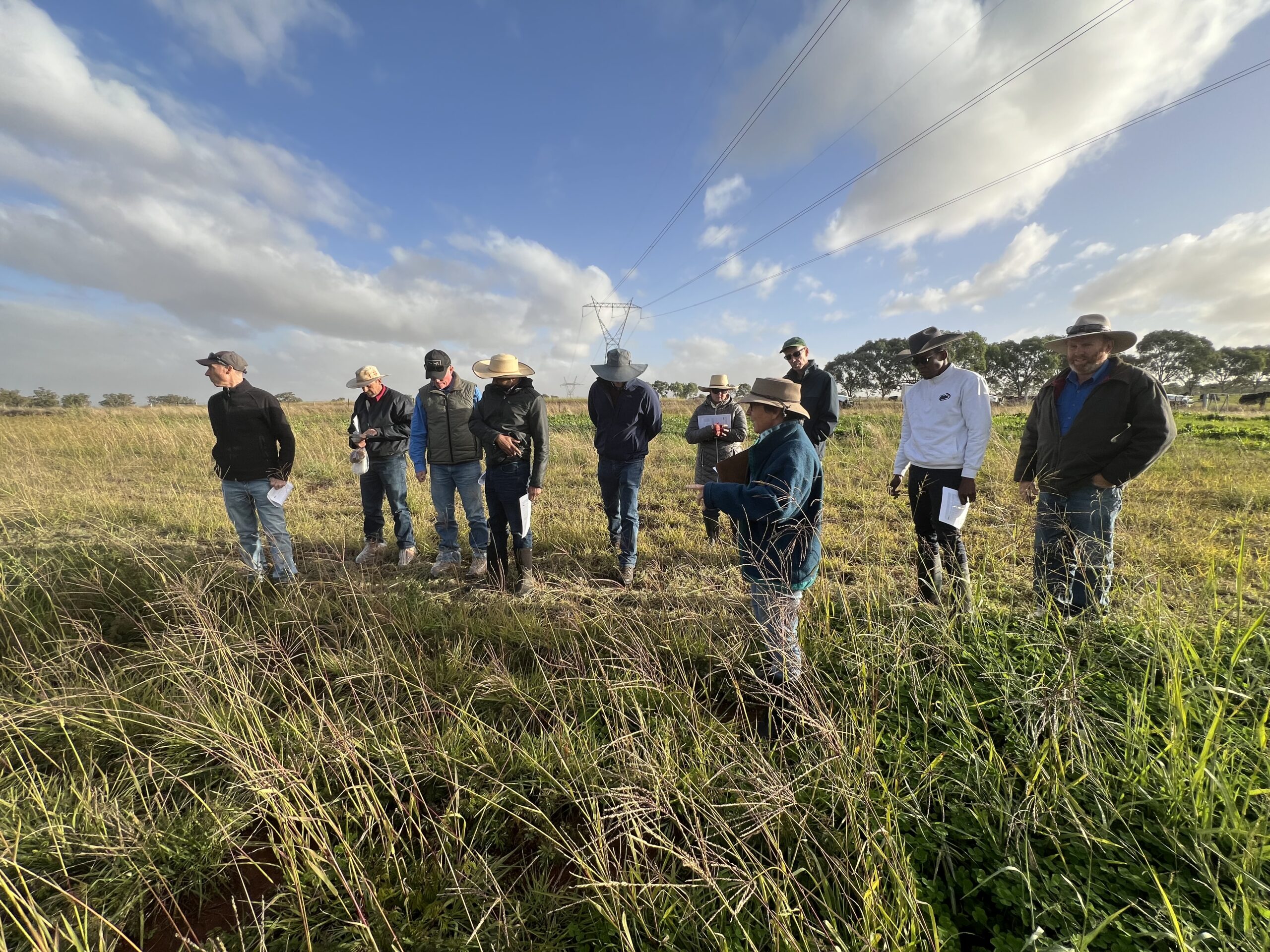
The team at Tamworth have trial plots of individual tropical grasses to prepare for dieback tolerance trials, in the event that pasture dieback arrives in the district. Pasture dieback has already been detected at Werris Creek, which is about 50km away. For more information on the NSW DPIRD research, visit their webpage.
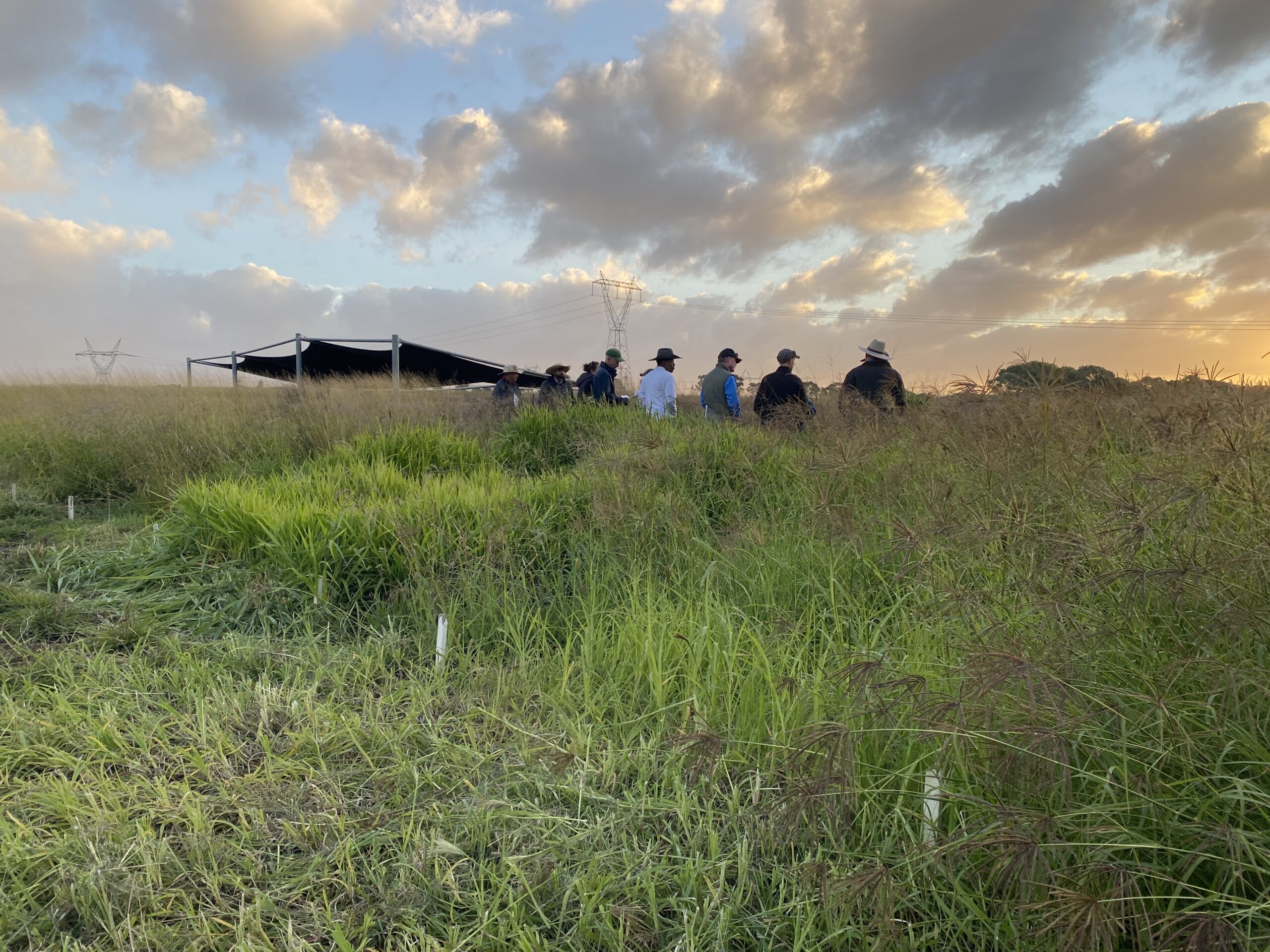
Day 3 – Orange, NSW
At the DPIRD Agricultural Institute in Orange we were greeted by even colder weather! We were shown detailed seed ecology research field trials aimed at understanding seedling recruitment in white clover which is a valuable perennial legume species for most of Southern Australia. We also saw the result of decades of plant breeding work that has identified perennial cereal grasses that can be used for grazing and grain cropping.
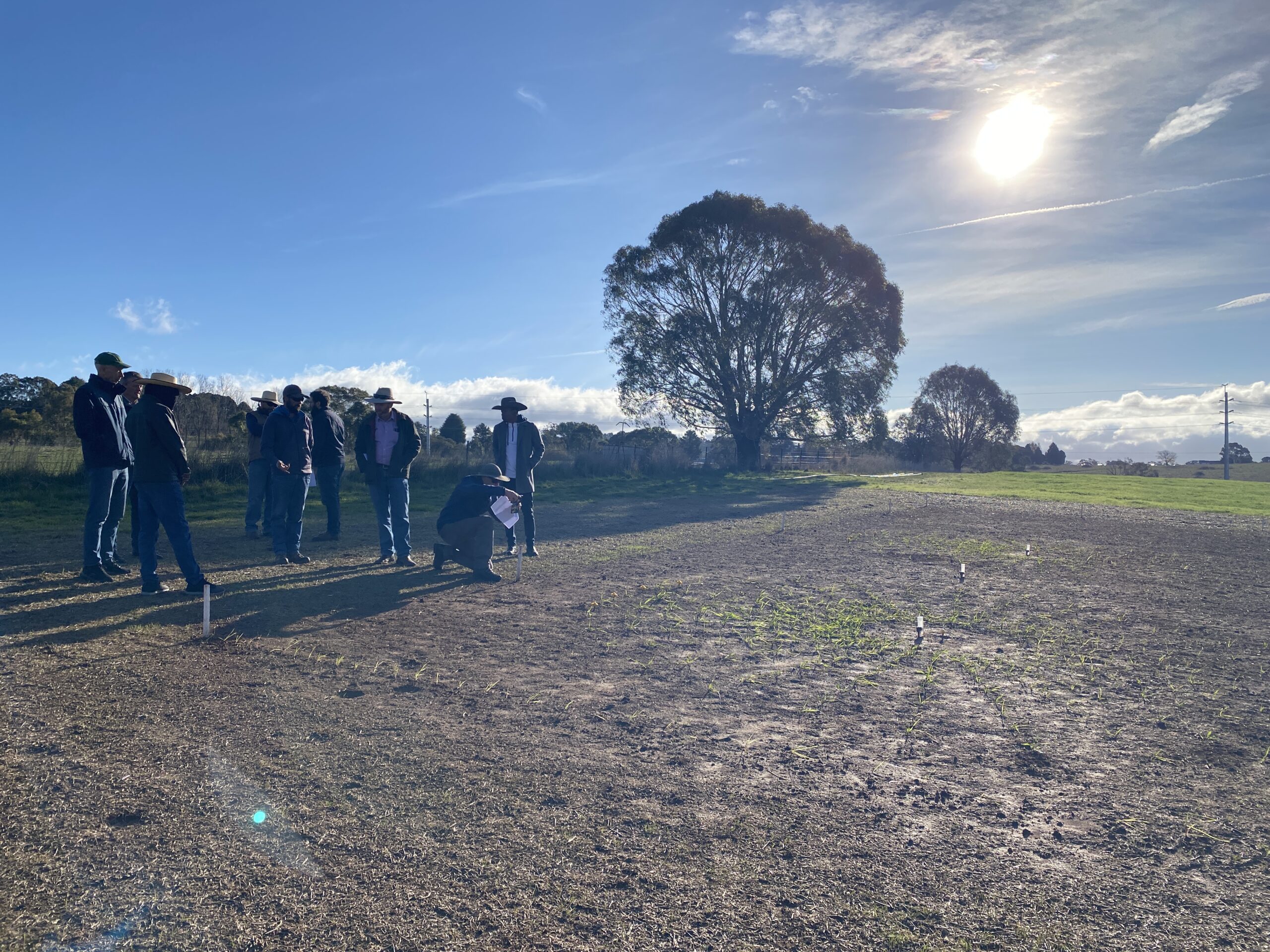
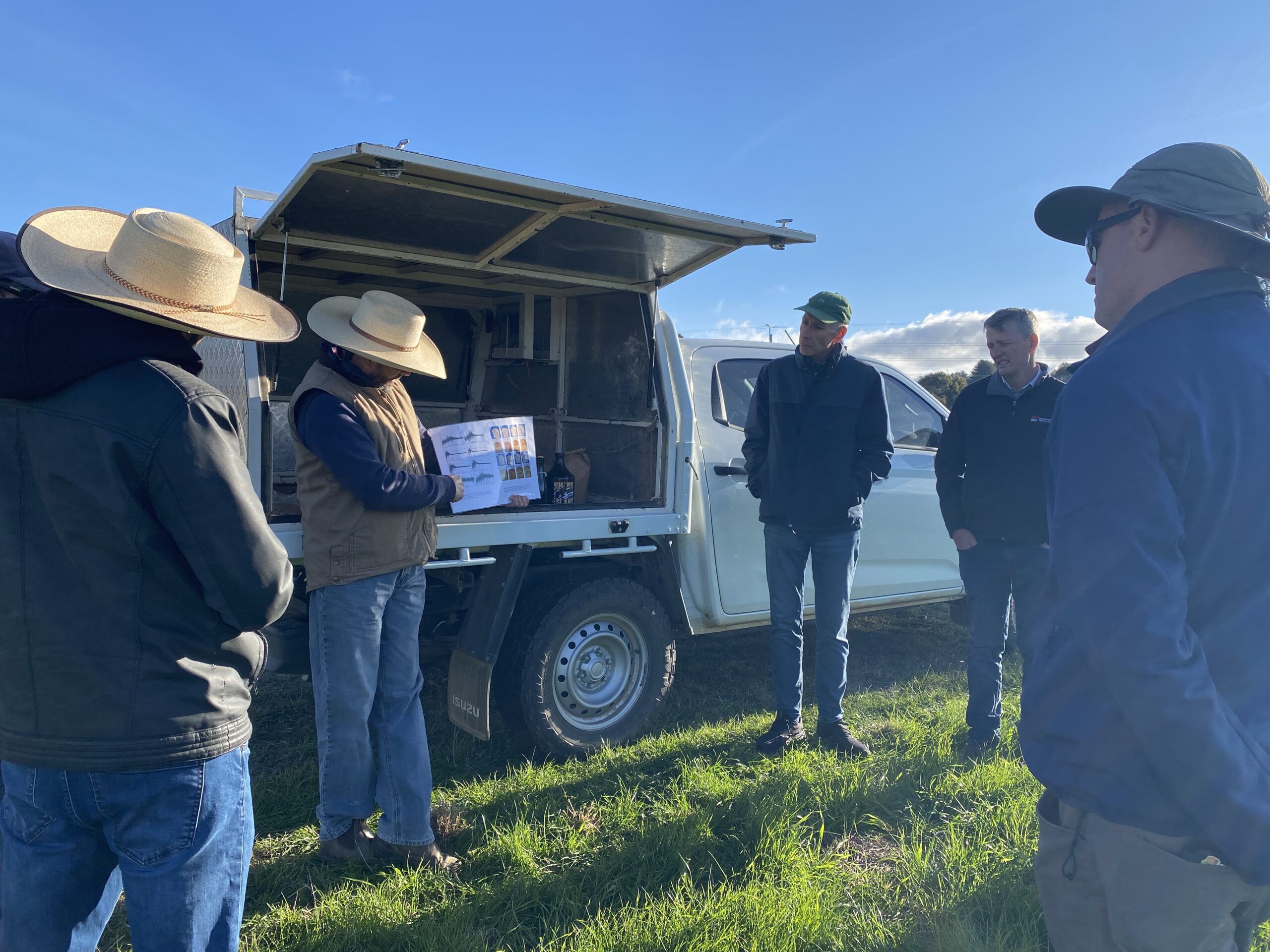
We spent the afternoon walking through the long-term grazing trial managed by Warwick Badgery that ran for 13 years. The trial aimed to determine how the management of intensive rotational grazing influences soil properties, pasture composition, livestock diet quality and performance, greenhouse gas emissions and profitability. This trial is similar to our DPI Wambiana Grazing Trial at Charters Towers, but uses sheep and temperate pastures.

Day 4 – Adelaide, SA
In Adelaide we were hosted by Alan Humphries and David Peck from the South Australian Research and Development Institute (SARDI) which is the research arm of the Department of Primary Industries and Regions South Australia (PIRSA) for a tour around the Waite Research Institute. Alan led a discussion and tour through the Australian Pastures Genebank (APG) which houses the Australian collection of pasture and forage plants of over 85,000 accessions from 2,461 species from 178 countries. More information on the APG is available here.

David led the group on a tour through facilities used for breeding improved varieties of crops and pastures with a focus on pasture legumes. We spoke with researchers involved in the pastures research including experts on genomics and molecular markers, rhizobia and speed breeding of pasture legumes. We also toured through ‘The Plant Accelerator’ which is a state-of-the-art facility for growing and describing plants for a range of research purposes. More information about The Plant Accelerator and the Australian Plant Phenomics Network that it is part of, can be found here.


The study tour finished with us joining our other DPI colleagues to present our work at the International Rangelands Congress in Adelaide. The study tour was an excellent opportunity to not only put faces to the names of some of our southern colleagues who we had not met in person (sometimes only online!) or only see every few years but also see their research trials and facilities in the flesh. We are extremely grateful for the funding from QPRP which enabled us to travel.
The Queensland Pasture Resilience Program is a partnership between the Department of Primary Industries, Meat & Livestock Australia and the Australian Government through the MLA Donor Company.